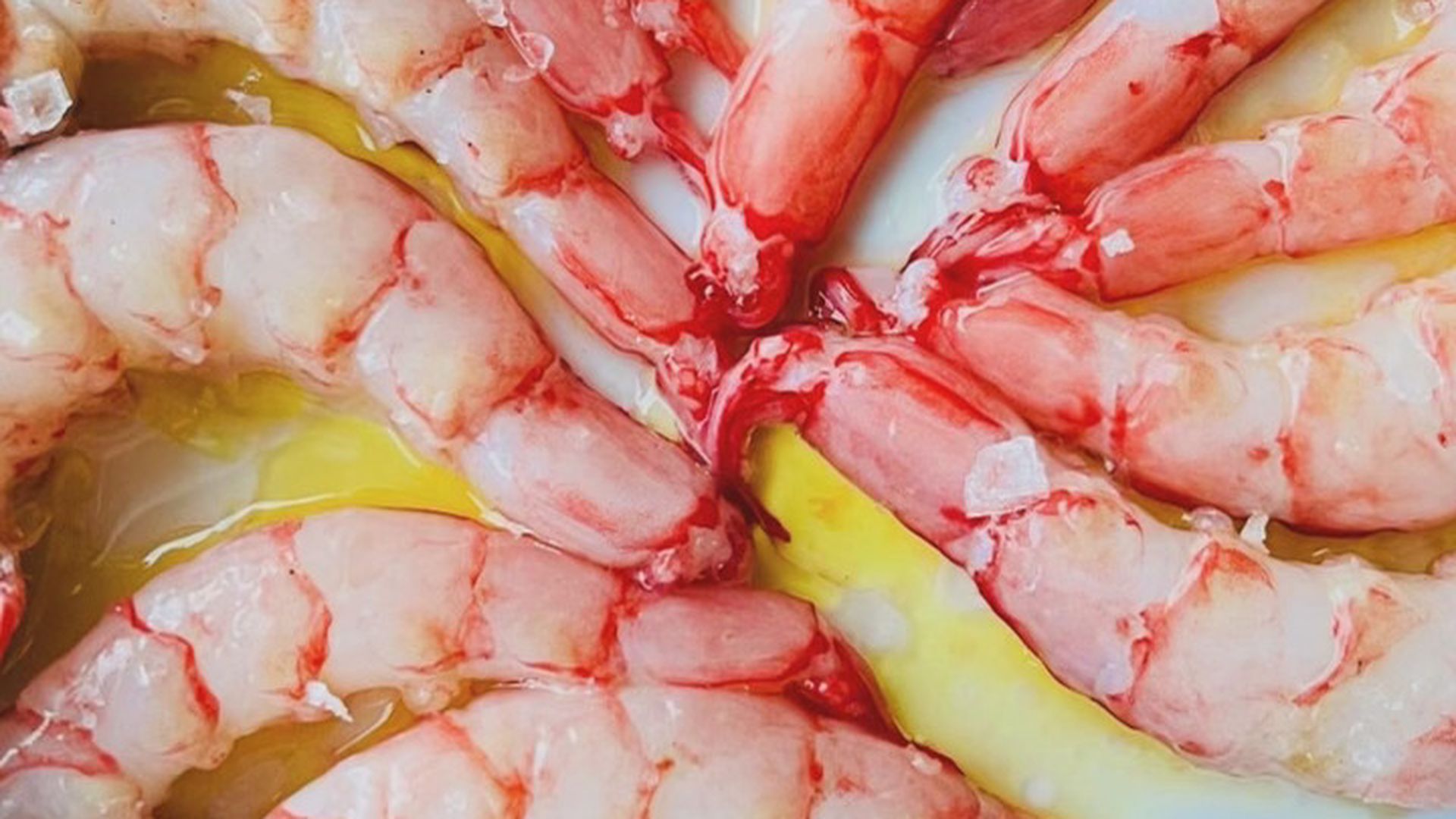
ONCE SOURCED OUT-OF-STATE, SHRIMP FROM NEW YORK IS BECOMING A STATUS INGREDIENT
Americans eat more than 1.5 billion pounds of shrimp a year, making it by far our most popular seafood. Most of the shrimp we buy at the fish market, grocery store, or at a restaurant comes from abroad, which carries with it a multitude of issues, from forced labor to the high carbon footprint caused by shrimp farming. When wild shrimp is US-harvested, it’s pulled in-season from the waters off Louisiana, Texas, Florida, and the Carolinas. Increasingly, though, a select number of New York restaurants are embracing local shrimp, highlighting fisheries in and around Montauk.
Long Island’s royal red shrimp is caught off Montauk at nearly 3,000 feet. “Their color is a gorgeous, gorgeous dark red; a color I’ve never seen in my life,” says lifelong fisherman, K.C. Boyle, formerly at Billion Oyster Project, now manager and an owner of the newly revived Dock to Dish, a Long Island-based seafood company owned by fishermen families and chefs that has recently revived following COVID.
Around New York, you can find local red shrimp – they’re delicate and sweet — recently added to menus at Ilis from Mads Refslund in Greenpoint; Houseman in Tribeca; Emilio’s Ballato at the edge of Little Italy, and more. They’re relatively rare in that many restaurateurs and consumers didn’t know about them until recently, nor has there been much demand.
One of a handful of companies catching local shrimp, Dock to Dish isn’t new. It started in 2012, originally as a fish CSA for residents of Montauk, Amagansett, and Sag Harbor. It grew to source all sorts of local seafood, mainly for fine dining restaurants, but halted sales during the pandemic when fine dining restaurants were forced to close.
In the interim, previous owner Sean Barrett sold the company to Boyle, in partnership with seven Long Island fishing families (David Aripotch, Stuart Foley, Richard Jones, Kevin Maguire, Charles Weimar and William Grimm, and Deena Lipman) as well as Hugue Dufour, chef and owner of M. Wells restaurant, and his wife and partner, Sarah Obraitis. Amanda Jones is also an owner, a general manager at Inlet Seafood, headquarters for Montauk’s fishing fleet and a commercial fishing dock, where Dock to Dish is based. In addition to those shrimp, the company is hauling in other items like local fluke, black sea bass, tilefish, and summertime tuna and mahi.
This month, Dock to Dish relaunched with more than 30 mostly fine dining restaurant partners, including Thomas Keller’s Per Se, Brooklyn’s Four Horsemen, Tribeca’s Frenchette, and the Lower East Side Cervo’s. Retail customers can also buy their fish from Mermaid’s Garden in Prospect Heights, where the shrimp is sold for about $28.95 a pound, alongside its tilefish and fluke.
Over at Cervo’s, the local delicacy is served as Montauk red shrimp a la plancha ($21). Refslund, chef and owner of Ilis, has been serving the shrimp as part of the raw bar course for a few months now, and is smitten with it. But Dock to Dish is not for every restaurant, Refslund notes. With a changing supply, it requires that a restaurant’s menu is also ever-changing – a nimbleness that is often limited to pricier restaurants. In addition, mom-and-pops may not have the bandwidth to deal with yet another supplier, even if the product is competitively priced.
Dock to Dish joins places like Greenpoint Fish & Lobster Co. in selling the royal red shrimp to restaurants. Greenpoint Fish sells to restaurants owned by Marc Forgione and Tom Colicchio, says owner Vinny Milburn, as well as retail at the shop for about $16 a pound. (Like shrimp from anywhere, prices can vary wildly.)
While Greenpoint Fish & Lobster Co. has multiple suppliers for its seafood — some direct from fishermen and others supplied more conventionally, with large-scale national suppliers — Dock to Dish is hyper niche and very focused on Montauk’s fishing families.
A model like Dock to Dish gives the current generation of Long Island fishermen an opportunity to earn at a higher price — often 20 percent more, the New York Times reports. Compare that to conventional supply chains, which traditionally goes from the fisherman to the processor to the importer to the auction to the freight handler to the restaurant (and then to the consumer). Through direct-to-fishermen models, the fish is caught; it goes to the harvester cooperative, and then to restaurants and or consumers.
Traditionally, says Boyle, “fishermen are told what they will make; it’s effectively a global commodity, and market price is determined by what people will pay, which changes hour to hour all over the world,” he says.
“That fluctuation is hard for fishermen to deal with and they sometimes don’t know what the price is until they get back to the dock: Dock to Dish can guarantee them a price and can pay them as soon as they get to the dock while usually fishermen can get paid weeks after they’ve fished.”
Back in Long Island, chef Armond Joseph namechecks the local shrimp on the menu at Leon 1909 on Shelter Island, where it’s served as crudo with nasturtium and chives, highlighting its sweet and buttery notes. “Montauk red shrimp,” he says, “is the most exceptional product that has come through our kitchen.”